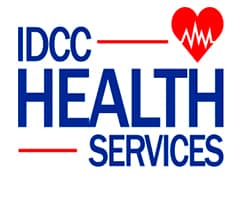Pain management doctors play a vital role in helping patients cope with chronic or acute pain, employing a range of methods tailored to individual needs. In this blog, we will explore the various approaches to pain reduction, factors that influence a doctor’s decisions, and the realistic expectations one should have when seeking pain management solutions.
Visit a pain management specialist in Brooklyn today!

Expectations and Reality of Pain Management
Having realistic expectations about pain management is crucial for patients seeking relief from chronic or acute pain. While pain management doctors strive to provide effective solutions, it is essential to understand the complexities of pain and the limitations of available treatments.
Pain management aims to reduce pain to a manageable level rather than eliminating it entirely, acknowledging that complete eradication of pain may not always be achievable, especially for certain chronic conditions. Instead, the focus is on improving daily functioning and enhancing the patient’s quality of life by minimizing pain to a level where it does not significantly impede daily activities.
A collaborative approach is key in pain management, where active patient participation and open communication with the pain management doctor are paramount. Patients must openly share their pain experiences, treatment preferences, and concerns, while doctors need to provide clear explanations of treatment options, potential outcomes, and possible risks.
Embracing this collaborative approach empowers patients to make informed decisions about their pain management journey, fostering a sense of ownership and involvement in their treatment plan. Pain management often involves a combination of approaches, including medication, physical therapy, psychological support, and interventional procedures.
Methods of Pain Reduction
When it comes to alleviating pain, pain management doctors employ a diverse array of strategies tailored to each patient’s unique needs and condition. These methods aim to provide relief and enhance the overall quality of life for individuals suffering from chronic or acute pain.
- Medication Management: One of the primary avenues in pain management is through the use of medications. Pain management doctors carefully assess the patient’s pain level, medical history, and any underlying health conditions to prescribe appropriate analgesics, anti-inflammatory drugs, muscle relaxants, or other medications. The goal is to reduce pain to a manageable level, allowing patients to engage in daily activities and improve their overall well-being.
- Interventional Procedures: In cases where medication alone may not be sufficient, pain management doctors may recommend interventional procedures. These procedures target specific sources of pain and can include nerve blocks, epidural injections, facet joint injections, and more. By directly addressing the root cause of the pain, interventional procedures aim to provide more targeted and long-lasting relief.
- Physical Therapy: Physical therapy is a fundamental component of pain management, offering a non-invasive and holistic approach to alleviate pain and enhance functional abilities. Pain management doctors integrate tailored exercise regimens to strengthen muscles, increase flexibility, and improve joint mobility, effectively reducing pain and improving daily functioning. Pain-relieving techniques, including manual therapies, heat and cold treatments, and electrical stimulation, further contribute to pain alleviation and promote the body’s healing process.
- Psychological Support: Pain management doctors prioritize psychological support as an integral part of the treatment plan, recognizing that addressing emotional challenges is as vital as managing physical symptoms. Through counseling and cognitive-behavioral therapy (CBT), patients find a safe space to express their feelings and develop healthier coping mechanisms by reframing negative thought patterns. Additionally, group therapy sessions offer a supportive environment where patients can connect with peers facing similar challenges, fostering a sense of community and empowerment.
Understanding these various methods can empower patients to have informed discussions with their pain management doctors, fostering a collaborative approach to finding the most effective and suitable pain reduction strategies.
Factors Influencing Pain Reduction
The process of pain reduction in pain management is intricate and multifaceted, influenced by various factors that differ from one individual to another. Pain management doctors carefully consider these factors when devising a personalized treatment plan, aiming to provide effective and targeted relief.
- Patient’s Health Condition: Each patient’s health condition is unique, and pain management strategies must be tailored accordingly. Pain management doctors conduct a comprehensive assessment of the patient’s medical history, current health status, and any underlying health conditions. This information helps them understand the root causes of pain and design an appropriate treatment approach that addresses specific needs and potential challenges.
- Type of Pain: Pain can manifest in diverse ways, with different origins ranging from musculoskeletal to neuropathic. Identifying the type of pain accurately is crucial in determining the most suitable treatment options. Pain management doctors utilize their expertise and diagnostic tools to pinpoint the underlying cause of pain, allowing them to prescribe targeted interventions that address the source of discomfort.
- Response to Treatment: Throughout the pain management journey, patients’ responses to prescribed treatments are closely monitored and evaluated. Pain management doctors regularly assess the effectiveness of the interventions and make adjustments as necessary. This dynamic approach ensures that the treatment plan remains adaptable and responsive to the patient’s evolving needs, optimizing the chances of achieving successful pain reduction outcomes.
The interplay of these factors underscores the personalized and patient-centric nature of pain management. Pain management doctors navigate these complexities with expertise and empathy, providing tailored solutions that align with each individual’s unique circumstances, ultimately leading to enhanced pain reduction and improved overall well-being.
Conclusion
In conclusion, pain management is a comprehensive and patient-centered approach that seeks to alleviate pain, improve functionality, and enhance overall well-being. Pain management doctors employ a diverse range of methods, from medication management and interventional procedures to physical therapy and psychological support.
Understanding the factors that influence pain reduction, such as the patient’s health condition, type of pain, and response to treatment, allows for a tailored and effective approach. While complete pain eradication may not always be possible, setting realistic expectations and embracing a collaborative journey with the pain management team can lead to meaningful improvements in daily living and a better quality of life.
